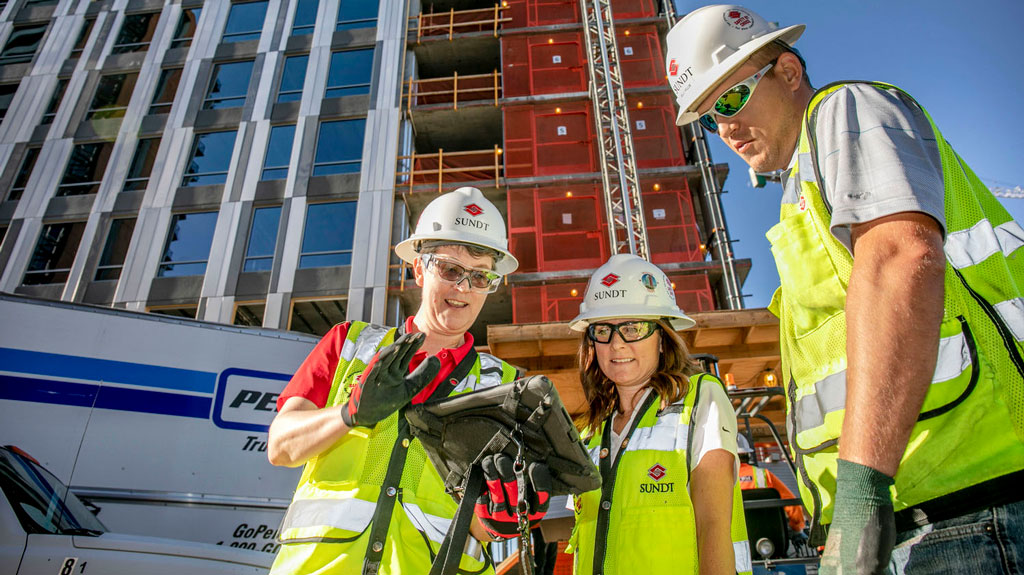Two recently published articles on homebuilding productivity in Canada, one building on the other, have pointed the finger at Canada’s residential construction sector for falling behind over many decades, with the authors pointedly calling for a review of the problem.
Both articles, the first produced in May by the Canada Mortgage and Housing Association (CMHC) titled What is Canada’s Potential Capacity for Housing Construction? and the second published in July in the Financial Post with the headline Canada has a Record Number of Skilled Tradespeople but not Enough Construction Activity, took a classic view of homebuilder productivity – the number of homes built per year divided by the number of workers in the homebuilding workforce.
CMHC senior vice-president Mathieu Laberge wrote that roughly 650,000 workers were building homes in Canada in 2023, the most ever, yet Canada’s housing production of 240,267 units was below the potential of over 400,000 homes per year.
From 1999 to 2004, he noted, workers per housing start was much lower than current numbers.
“With the current resources, we should be building between 130,000 and 225,000 more homes each year,” Laberge wrote.
“More can and must be done by governments and the industry to achieve greater housing outcomes.”
The Financial Post article by Murtaza Haider and Stephen Moranis cited the CMHC report but compared homes built per worker going back to the 1987.
“Had the series started in 1987, data would reveal that Canada built 246,000 new homes that year, more than were constructed in 2023,” they argue. “A comparative analysis of the construction labour force size and housing production from 1987 to the present might demonstrate that, despite substantial growth in the labour force, there has been no significant increase in annual housing output.”
No longer can a skilled trades shortage be blamed, Haider and Moranis wrote: “Determining the causes for the decline in construction sector productivity is paramount.”
Too many taxes, costs
Two homebuilding association executives, Richard Lyall, CEO of the Residential Construction Council of Ontario and Kevin Lee, CEO of the Canadian Home Builders’ Association, cite multiple reasons why they felt the analysis was misleading, including changes in the size of single-family homes and a growing regulatory burden that adds layers of complexity to building.
While both Lyall and Lee said they thought there was room for improvement, and cited numerous initiatives the industry was undertaking such as modular building and digitization of project management, Lee called comparing homebuilding from the 1980s and 1990s to today’s products “apples and oranges.”
“Is the reason we have less housing starts right now because of productivity and labour supply? The answer to that is no,” said Lee.
Issues fall into worksite productivity analysis, they suggested, and also financial, regulatory and cyclical factors. When high interest rates keep masses of potential homebuyers on the sidelines, workers stay at home and the accusation is poor productivity. During a slowdown in construction, builders are reluctant to lay off workers because they are hard to replace, Lee said, and so they stay on staff but are doing less work.
Development charges have gone up 700 per cent, Lee said, adding to the cost of homes.
“Too many taxes, too many costs,” he said. “If people can’t afford to buy a house, we can’t build them, and then the supply continues to get worse.”
“We do have issues with affordability because of complexity of regulations and delays in inspections and permitting…Red tape has dramatically driven up the timelines for construction.
“So it does take more people to build a house with different sets of expertise than it did 30 years ago.”
Lyall raised numerous other reasons why each unit takes longer to build, with more workers required, and more safety and quality standards.
“If you look at the general production of housing and productivity, I mean, the big, big factor there is the regulatory system that affects your productivity,” he said. “It’s huge.”

Time is money
Toronto City Hall hired over 100 new planners, Lyall said, but they now submit lengthy reports to developers instead of three pages.
Lee said “time is money” in those instances, because the developer is financing the project as the permitting takes years, and more and more interest payments accumulate.
“In turn, that’s reflected in the price of a home,” said Lee, which diminishes demand.
Both Laberge and Haider said their intention in focusing on falling productivity was to suggest homebuilders have a major role to play in seeking solutions to get more homes built.
“I’m actually surprised this is something that’s contested, but however you look at it, you know we could do better, and that’s the intent,” Laberge said, explaining his call for action.
“This is not our research. This is done by CMHC and Statistics Canada,” said Haider, suggesting the productivity calculations are standard.
“I brought up the 1970s for a reason. The industry produced far more homes in the ‘70s, three million homes,” he said. “Something was happening there that was right in terms of how we produced and how quickly converted an intent to build into units going through the planning process.”
Citing high interest rates in a discussion of productivity is flawed, Haider said, because the poor productivity statistics were in evidence five years ago when rates were low.
“We know Canada wants to build three- to five-million homes in the next 10 years,” he said. “What changes would the industry like in terms of regulation, in terms of construction technology, in terms of utilization of labour, to get things better, faster and safer?”
One factor to be discussed, Haider said, was the “atomized structure” of the industry — 69 per cent of construction activity involved firms with fewer than five employees.
“The size of Canadian construction firms may need to increase to realize economies of scale in housing,” Haider wrote.
Small firms are less able to invest in innovations and plant improvements, Lee acknowledged.
“The ability to make big investments in large overhead, which is what’s required to move to a more factory-based approach and manufacturing approach to housing, it’s very difficult, given the nature of the housing cycle,” he said.
On Aug. 19 Lee was one of five homebuilding experts announced to assist the federal government on a round of consultations to develop a Canadian industrial strategy for homebuilding. Topics to be addressed include improving productivity within the housing sector and stimulating innovation.
“There’s always room for improvement,” said Lyall. “That’s what we constantly try to do. And the industry is very good at adopting new technologies in terms of tools, equipment, lasers, drones, we’re using all that stuff.”
Follow the author on X/Twitter @DonWall_DCN








Recent Comments